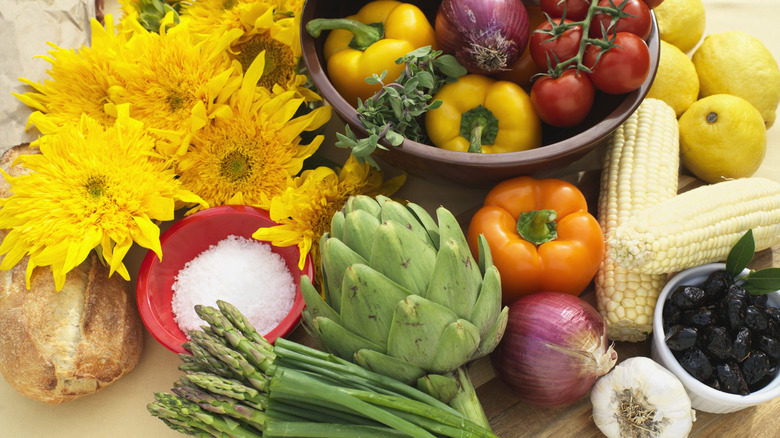How To Substitute Vegetables Based On Cooking Time
At some point all home cooks inevitably have to make some kind of vegetable swap in a recipe. Whether this is because of seasonal availability, your taste preferences, or what you happened to buy at the store this week, there are a lot of reasons why what you have on hand may not exactly match what the recipe calls for. The good news is that a lot of recipes are amenable to vegetable swaps, as long as you pick vegetables with comparable cooking times.
The reason for this is that recipes are written based on what the author knows needs to happen in order to completely cook a vegetable alongside the rest of the ingredients. If you substitute an ingredient for something that cooks too quickly, you risk having mushy, overcooked vegetables. Alternatively, if you add in a vegetable that cooks much more slowly than the recipe cooking time allows for, you are going to end up with an unappetizing, even woody, meal.
Swap vegetables with the same cooking times
It's easy to make substitutions within greens because they all cook fairly quickly. Feel free to substitute spinach, chard, kale, and other greens for each other in any recipe. Other vegetables that cook quickly and can make good substitutes for each other include small tomatoes like grape or cherry, peas, and summer squashes like zucchini. Roasted at 425 degrees Fahrenheit in the oven, these shouldn't take more than 10-15 minutes.
Winter squash, on the other hand, should only be swapped out for other harder texture vegetables like carrots or potatoes. These are veggies that take longer to cook, and recipes will take this into account when they give you a cook time as well as a temperature. In addition to swaps, it's common to want to add more types of vegetables than the recipe calls for. Go ahead and get creative, just remember to adjust the other vegetables to accommodate for the recipe's volume and texture parameters.

